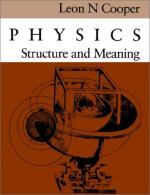|
This section contains 381 words (approx. 2 pages at 300 words per page) |
World of Scientific Discovery on Leon N. Cooper
Cooper was born in New York City on February 28, 1930. He earned his bachelor of arts (1951), master of arts (1953) and doctor of philosophy (1954) degrees from Columbia University. After spending a year at the Institute for Advanced Studies in Princeton, he served successively on the faculties at the University of Illinois, The Ohio State University, and Brown University.
In the early 1950s, John Bardeen and J. Robert Schrieffer at the University of Illinois were attempting to develop a theoretical explanation for the phenomenon of superconductivity. Superconductivity--the loss by a material of all resistance to the flow of electrical current--had been discovered in 1911 and a number of empirical studies were done on it in the following four decades. But no fundamental theory existed to provide an atomic-level explanation of the phenomenon.
In 1955, Bardeen invited Cooper to join this effort at Illinois. By that time, Cooper had earned a reputation as a gifted specialist in quantum mechanical theory. In a relatively short time, Bardeen, Cooper, and Schrieffer had developed a successful explanation for superconductivity, an idea now known as the BCS theory.
A key feature of this theory is the concept of Cooper pairs of electrons. Cooper realized that the movement of a free electron through a metal has a tendency to attract positive ions toward itself. The dislocation of these ions, in turn, tends to create a trail of positive charge to which a second electron may be attracted. Under some circumstances, the resulting attraction between these two electrons may become greater than the electrostatic force of repulsion they experience. The two may then begin to act as a single bound pair, the Cooper pair.
The BCS theory postulates next that the phenomenon of Cooper pairs may be extended to all of the conducting electrons in the metal. These electrons develop a common momentum that completely alters the way they respond to the presence of an external electrical field, becoming a continuous unidirectional flow, rather than producing resistance to the external field. For his part in the development of this theory, Cooper shared the 1972 Nobel Prize for physics with Bardeen and Schrieffer.
In recent years, Cooper has shifted his attention to research on the central nervous system. He has been studying the way nerve cells are modified during the process of learning.
|
This section contains 381 words (approx. 2 pages at 300 words per page) |


